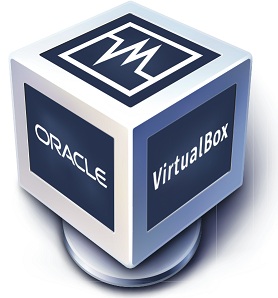
VirtualBox is a powerful x86 and AMD64/Intel64 virtualization product for enterprise as well as home use. Not only is Virtual-box an extremely feature rich, high performance product for enterprise customers, it is also the only professional solution that is freely available as Open Source Software under the terms of the GNU General Public License (GPL) version 2. Presently, Virtual-box runs on Windows, Linux, Macintosh, and Solaris hosts and supports a large number of guest operating systems including but not limited to Windows (NT 4.0, 2000, XP, Server 2003, Vista, Windows 7/8/8.1/10), DOS/Windows 3.x, Linux, Solaris and Open-Solaris OS/2, and OpenBSD.
Paravirtualization Support for Windows and Linux Guests: Significantly improves guest OS performance by leveraging built-in virtualization support on operating systems such as Oracle Linux 7 and Microsoft Windows 7 and newer.
Improved CPU Utilization: Exposes a broader set of CPU instructions to the guest OS, enabling applications to make use of the latest hardware instruction sets for maximum performance.
Support of USB 3.0 Devices: Guest operating systems can directly recognize USB 3.0 devices and operate at full 3.0 speeds. The guest OS can be configured to support USB 1.1, 2.0, and 3.0.
Bi-Directional Drag and Drop Support for Windows: On all host platforms, Windows, Linux and Oracle Solaris guests now support "drag and drop" of content between the host and the guest. The drag and drop feature transparently allows copying or opening of files, directories, and more.
Disk Image Encryption: Data can be encrypted on virtual hard disk images transparently during runtime, using the industry standard AES algorithm with up to 256 bit data encryption keys (DEK). This helps ensure data is secure and encrypted at all times, whether the VM is sitting unused on a developer's machine or server, or actively in use.
Changes in VirtualBox 5.0.16 Version:
- VMM: fixed a problem which could lead to a wrong guest behavior on AMD CPUs
- GUI: prevent a crash during startup under rare conditions
- GUI: position off-screen windows to be fully visible again on relaunch
- GUI: hide the VT-x/AMD-V checkbox if raw-mode is not supported
- PC speaker passthrough: new experimental feature, available on Linux host only
- Audio: several fixes for Mac OS X hosts + guests
- Audio: fixed a bug which prevented loading a saved state of a saved guests with HDA emulation
- Audio: don't crash if the backend is unable to initialize
- USB: serveral fixes for the xHCI controller (e.g. for webcam passthrough)
- BIOS: fixed int15/AH=83/AL=00 function
- BIOS: properly report if two floppy drives are attached
- iPXE: enable the HTTP download protocol on non-Linux hosts
- Shared folders: fixed a failure to load the saved state under certain circumstances
- Guest Control: added support for (cached) Active Directory authentication in case the domain controller is not reachable (anymore)
- Serial ports: raised the number of serial ports per VM from 2 to 4
- SDK: make the Python webservice API binding work again
- Seamless mode: fixed a crash under certain circumstances
- Linux hosts: fixed the /sbin/rcvboxdrv script as well as the missing shebang in two scripts
- Linux hosts: properly uninstall Python files installed by the .run installer
- Linux hosts: properly create the /sbin/rcvboxdrv symbolic link
- Linux Additions: fixes for Linux 4.5
- Storage: fixed a possible crash when attaching the same ISO image multiple times to the same VM
- USB: fixed a problem with filters which would not capture the device under certain circumstances
- ExtPack: black-list Extension Packs older than 4.3.30 due to incompatible changes not being properly handled in the past
Download Extensions for VirtualBox (like: Usb 2.0, etc). You can even download deb file if you don't want to add repository.
For other distributions download from here.
How to Install VirtualBox 5.0.16:
Available for Ubuntu 15.10 Wily/14.04 Trusty/12.04 Precise/Debian 8 Jessie/7 Wheezy/Linux Mint 17.x/17/13/other Ubuntu derivativesTo install VirtualBox in Ubuntu/Linux Mint open Terminal (Press Ctrl+Alt+T) and copy the following commands in the Terminal:
That's it
